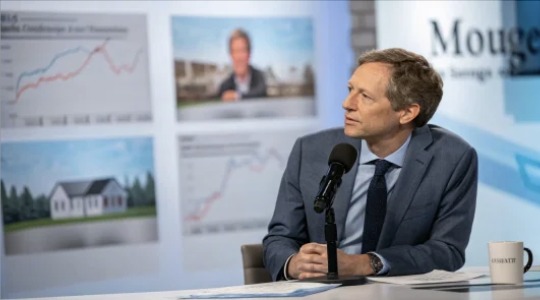The journey to debt freedom isn’t about perfect willpower or extreme deprivation—it’s about understanding your psychology and implementing systems that actually work. This insight comes from someone who successfully paid off $100,000 in student loans and credit card debt in just four years, despite initially living paycheck to paycheck.
The traditional approach to debt repayment often fails because it focuses solely on numbers while ignoring the psychological aspects of financial behavior. By working with your psychology rather than against it, debt freedom becomes not just possible but sustainable.
Table of Contents
ToggleFinding Your Intrinsic Motivation
Before tackling any debt repayment strategy, identifying a powerful intrinsic motivation is crucial. This “why” must be compelling enough to sustain momentum through what is typically a years-long journey. Superficial motivations, such as wanting to travel or buy nice things, often prove insufficient.
For many successful debt-free individuals, the motivation stems from deeper places—such as breaking generational cycles of financial scarcity or supporting aging parents. These powerful emotional drivers provide the necessary fuel when the debt repayment journey becomes challenging.
The Three-Step Debt Elimination Process
The path to debt freedom follows three critical steps that balance practical action with psychological sustainability:
Step 1: Face Your Financial Reality
The first breakthrough in debt repayment comes from gaining complete clarity on your financial situation. This means calculating your net worth by listing everything you own (assets) and everything you owe (liabilities). Additionally, tracking your cash flow—money coming in versus money going out—provides a clear picture of your monthly financial reality.
This step requires courage, as the numbers might initially be discouraging. However, this clarity becomes the foundation for all future progress. Just as someone trying to lose weight must first step on the scale, those seeking debt freedom must first face their financial numbers without judgment.
Step 2: Strategize Your Debt Repayment
Strategic debt repayment follows a specific financial waterfall approach:
- First, build a $2,000 emergency fund to prevent new debt from unexpected expenses
- Then focus exclusively on high-interest credit card debt before addressing lower-interest debts
- Use the debt snowball method—paying off smallest balances first—to create psychological wins
This approach recognizes that double-digit interest debts (typically credit cards) should be prioritized over single-digit debts, such as student loans or mortgages. The debt snowball method leverages human psychology by providing regular dopamine hits from completely eliminating individual debts, rather than making slow progress across multiple accounts.
Step 3: Increase Your Financial Gap
The “gap” between income and expenses determines how quickly debt can be eliminated. While most advice focuses on cutting expenses, increasing income often offers a greater potential for accelerating debt repayment.
One debt-free success story involved asking for a raise after making oneself indispensable at work, which added $50,000 to their income over two years—all of which went toward debt repayment. This approach required courage but yielded significant results.
On the expense side, following a sustainable budget prevents the deprivation-splurge cycle that derails many debt repayment efforts. The 50-30-20 budget allocates:
- 50% to needs (housing, utilities, minimum debt payments)
- 30% to financial goals (extra debt payments)
- 20% to wants (entertainment, dining out)
This balanced approach recognizes that complete deprivation is unsustainable and counterproductive.
The 10-Day Sprint Strategy
To accelerate progress without burning out, the 10-day sprint strategy offers a powerful tool. During these focused periods, all discretionary spending ceases, and any additional income from selling items or side hustles is directed directly toward debt.
These intense 10-day periods create significant momentum and confidence boosts, while the return to normal spending afterward prevents burnout. Alternating between sprints and regular periods (perhaps 10 days of intensity followed by 20 days of everyday budgeting) creates a sustainable rhythm for long-term success.
The Psychology Behind Sprint Success
The 10-day sprint strategy is effective because it aligns with fundamental aspects of human psychology that traditional budgeting methods often overlook. Our brains are wired for short-term goals and immediate rewards, making the prospect of years-long debt repayment feel overwhelming and abstract. By compressing intense focus into manageable 10-day periods, this strategy transforms debt elimination from a marathon into a series of achievable sprints.
The psychological power lies in creating what researchers call “temporal landmarks” – distinct periods that feel separate from everyday life. Just as people are more likely to start diets on Mondays or exercise routines in January, the defined boundaries of a 10-day sprint create a mental reset that makes dramatic behavioral changes feel possible rather than impossible.
During these sprints, the brain experiences what psychologists term “implementation intention” – a pre-planned response to specific situations. Instead of relying on willpower in the moment, you’ve already decided exactly how you’ll respond to spending temptations. This removes the mental fatigue associated with constant decision-making about money, allowing you to preserve your energy for behaviors that actually eliminate debt.
Pre-Sprint Preparation: Setting Yourself Up for Success
The most successful 10-day sprints begin with thorough preparation during the week preceding the intensive period. This preparation phase addresses both practical logistics and psychological readiness, ensuring that when the sprint begins, you can focus entirely on execution rather than planning.
Financial Preparation
Calculate your current available cash and identify every possible source of additional income during the sprint period. This includes checking for unused gift cards, planning to sell items you no longer need, and identifying any freelance or side hustle opportunities that could generate quick income. The goal is to create a comprehensive inventory of resources that can be directed toward debt elimination.
Equally important is preparing for expenses that might arise during the sprint. Pay all bills that will come due during the 10 days in advance, and ensure you have the necessary groceries and household items already purchased. This advanced preparation prevents the sprint from being derailed by legitimate expenses that feel like failures.
Social and Environmental Preparation
Communicate your sprint intentions to family members and close friends who might otherwise invite you to spending-related activities. This isn’t about avoiding social connection, but rather about setting expectations and potentially inspiring others to support your financial goals.
Prepare your physical environment by removing spending triggers. Delete shopping apps from your phone, avoid stores where you typically make impulse purchases, and create physical barriers between yourself and spending opportunities. Some successful sprinters temporarily give their credit cards to trusted friends or freeze them in blocks of ice – creating just enough friction to prevent impulsive decisions.
Daily Sprint Execution Strategies
Each day of the sprint follows a structured approach that maximizes both financial impact and psychological momentum. The key is creating daily rituals that reinforce the sprint mindset while providing concrete progress markers.
Morning Activation Ritual
Begin each sprint day by reviewing your total debt balance and calculating exactly how much progress you achieved the previous day. This daily confrontation with numbers serves two purposes: it motivates visible progress, and it maintains the psychological urgency that makes sprints effective.
Follow this financial review with a brief visualization exercise, imagining how it will feel when specific debts are entirely eliminated. This mental rehearsal strengthens the emotional connection to your debt-free goal and provides psychological fuel for maintaining sprint intensity throughout the day.
Midday Progress Check
Around midday, assess any income-generating opportunities that have emerged and identify potential expenses that might arise later in the day. This isn’t about obsessive monitoring, but rather about maintaining conscious awareness of financial decisions that could impact sprint results.
Use this midday moment to practice what behavioral economists call “mental accounting” – specifically categorizing the day’s financial activities as either supporting or undermining your sprint goals. This cognitive framework helps maintain focus and prevents small compromises from snowballing into sprint failures.
Evening Documentation
End each sprint day by documenting both financial progress and emotional experiences. Record the exact amount directed toward debt elimination, but also note moments of temptation, strategies that worked well, and any unexpected challenges that arose.
This documentation serves multiple purposes: it provides accountability, identifies patterns that can improve future sprints, and creates a record of progress that becomes motivating during difficult moments in subsequent debt repayment efforts.
Advanced Sprint Techniques for Maximum Impact
The Income Acceleration Method
During sprints, focus intensively on activities that can generate immediate income rather than long-term income growth. This might include selling items through online marketplaces, offering services such as house cleaning or pet sitting, or taking on additional shifts if your employment allows for flexible scheduling.
The key insight is that income generated during sprints has an amplified psychological impact because it’s directly and immediately applied to debt reduction. Earning an extra $200 during a sprint and watching debt balances drop creates much stronger reinforcement than earning the same amount during regular periods, when it might be absorbed into general expenses.
The Expense Elimination Challenge
Transform the sprint period into a game by challenging yourself to eliminate every possible expense, no matter how small. This includes skipping daily coffee purchases, walking instead of driving when possible, using up items you already own instead of buying new ones, and finding free alternatives to paid entertainment.
The psychological power of this approach lies not in the absolute dollar amounts saved, but in the sense of control and agency it creates. Each small victory over spending impulses builds confidence and reinforces the sprint mindset, making larger financial changes feel more achievable.
The Social Leverage Strategy
Share your sprint goals with others and create accountability partnerships that amplify your commitment. Some successful sprinters create friendly competitions with friends or family members, seeing who can direct the most money toward financial goals during the same 10-day period.
This social element addresses one of the biggest challenges in debt repayment: the isolation that comes from avoiding spending-based social activities. By reframing debt elimination as a shared challenge rather than personal deprivation, sprints become energizing rather than exhausting.
Managing Sprint Recovery and Sustainable Rhythms
The period immediately following a 10-day sprint is crucial for maintaining long-term momentum in debt repayment. The transition back to standard spending patterns must be handled carefully to prevent psychological backlash that could undermine overall progress.
The Gradual Re-entry Approach
Rather than immediately returning to full spending freedom, implement a graduated approach over the first three days following a sprint. This might involve allowing small discretionary purchases on day one, moderate spending on day two, and completely normal budgeting by day three.
This gradual transition prevents the psychological whiplash that can occur when moving too quickly from intense restriction to regular spending patterns. It also provides an opportunity to evaluate which sprint strategies might be worth incorporating into regular financial routines.
Celebration Without Sabotage
Acknowledge sprint successes with celebrations that don’t undermine financial progress. This might involve free activities, such as hiking or visiting museums on free days, rather than expensive dinners or shopping trips. The goal is to reinforce positive associations with financial discipline without creating new obstacles to debt elimination.
Planning the Next Sprint Cycle
Use the reflection period following each sprint to plan the timing and focus of your next intensive period. Most successful sprinters find that alternating between 10-day sprints and 20-day regular periods creates sustainable rhythms that maintain progress without causing burnout.
Consider varying the focus of different sprints – some might emphasize income generation, others might focus on expense elimination, and still others might combine both approaches. This variation prevents boredom and allows you to experiment with different strategies for accelerating debt repayment.
The 10-day sprint strategy transforms debt elimination from an overwhelming long-term commitment into a series of manageable, high-impact challenges. By working with your psychology rather than against it, these intensive periods create momentum, confidence, and tangible progress that makes long-term debt freedom not just possible, but inevitable.
The freedom that comes from eliminating debt transforms not just financial statements but life possibilities. When monthly payments disappear, income becomes a tool for building dreams rather than servicing past decisions. This freedom represents the ultimate reward for those willing to work with their psychology rather than against it on the journey to debt freedom.
Featured Image Credit:

















